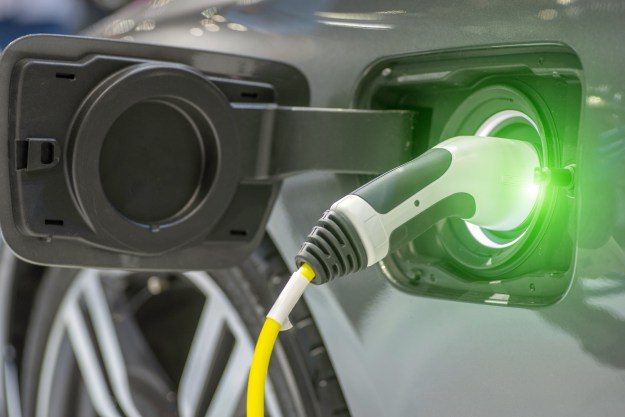Changing a car battery requires no incredibly esoteric or special tools, doesn’t pose any outsized danger to your safety, and is well within the reach of just about anyone. Doing it yourself can also save you a bundle in fees and shop time. Here’s how you do it:
Step one: Find your battery

The first step is to find your battery. In a vast majority of cars it’s located in a corner of the engine bay. Either up front, behind one of the headlights, or out back, right below the windshield on either side. Note that it might be hidden under a plastic cover, especially if you drive a car made in the last decade or so. Don’t panic if you don’t see it under the hood; the dealer didn’t rip you off. Some auto manufacturers (like BMW) often choose to install the battery under the rear seat or in the trunk to save space. Your owner’s manual will help you find it if you’re unsure of its location.
Found it? Good. Now it’s time to roll up your sleeves. Speaking of, we recommend wearing clothes you don’t mind getting a little bit dirty. And, make sure you know the code to your car’s stereo. On some cars, disconnecting the battery resets the stereo and it will ask for a permission code the next time it starts up.
Step two: Disconnect the terminals
Your 12-volt battery has a positive and a negative terminal, just like the AA batteries you used to put in your Game Boy Color. It’s connected to the car’s electrical system via metal terminal ends. Find both terminal ends — keep in mind the positive one might be under a plastic cover — and determine how they’re secured. You’re in luck if your car has a quick-release clamp. If not, you’ll need wrenches to loosen the terminal ends. The size of the bolt varies from car to car. Some use 10-millimeter bolts, some use 13-mm bolts, and some use one of each. You might even find a car with a 7-mm bolt, or a different size entirely.
Start by disconnecting the negative terminal end. It’s the one with a – symbol next to it, usually on the battery casing. Remember: righty tighty, lefty loosey. The bolt shouldn’t require an immense amount of effort to break loose. Make sure your wrench never touches both terminals at the same time. It will conduct electricity and cause sparks to fly, which is the last thing you want while working around a gasoline engine. Gently pull up on the terminal end once it’s loose to remove it and tuck it out of the way. Do the same with the positive terminal, and this time make sure the wrench doesn’t touch a metal part of the car (like the hood or the body).
Step three: Remove the battery hold-down
Both terminal ends are off the battery — what now? You can’t just yank the battery out. It’s held down by a retaining system that usually consists of a strap or a metal plate. Either way, you’ll need a socket wrench, the appropriate socket, and an extension bar long enough to clear the battery and reach the bolt.
Loosen it slowly and make sure you don’t drop the bolt. We recommend using a telescopic magnet to retrieve it before it falls in the dark, greasy abyss otherwise known as your engine bay. You can also use a set of pliers, or simply reach down and grab it if you have enough space to do so.
Step four: Remove the old battery and inspect the terminals
Now, you’re ready to pull the battery out. It’s relatively heavy, it can weigh 20 pounds or more depending on its size, so be prepared. Look at the terminal ends before you reinstall the new one. If you see a build-up of green-ish, gray-ish, or white-ish powder you’ll need to clean them with either emery cloth or sandpaper to keep your charging system in tip-top shape. Don’t use anything too coarse; 100-grit works fine. Sand the inner part of the terminal ends until they’re nice and shiny. Battery acid is corrosive so wear gloves and try not to get any on your clothes.
Step five: Install the new battery

Drop in the new battery and don’t forget to tighten the retaining system you removed earlier. Most new batteries come with anti-corrosion washers and grease to keep terminals free of dirt and grease. Go easy on the grease but cover the entire surface of the terminal. Then, connect the positive battery terminal first, always making sure the wrench doesn’t come in contact with another metal part. It needs to be tight, you shouldn’t be able to move the terminal end by hand, but don’t over-tighten it or you’ll break it. Repeat these steps for the negative terminal end.
Double-check that you didn’t leave any tools in the engine bay, close the hood, and start the car to ensure everything works as it should.
Congratulations, you’ve just changed your first battery. If you are interested in knowing more about your car, especially the reasons why your check engine light is on, you can check the guide we created.
Editors' Recommendations
- The 10 best car battery brands in 2024
- Is your check engine light on? Here are 10 possible reasons why
- The best electric cars you can buy in 2023
- Can electric car batteries be recycled?
- How much does an electric car battery cost?












